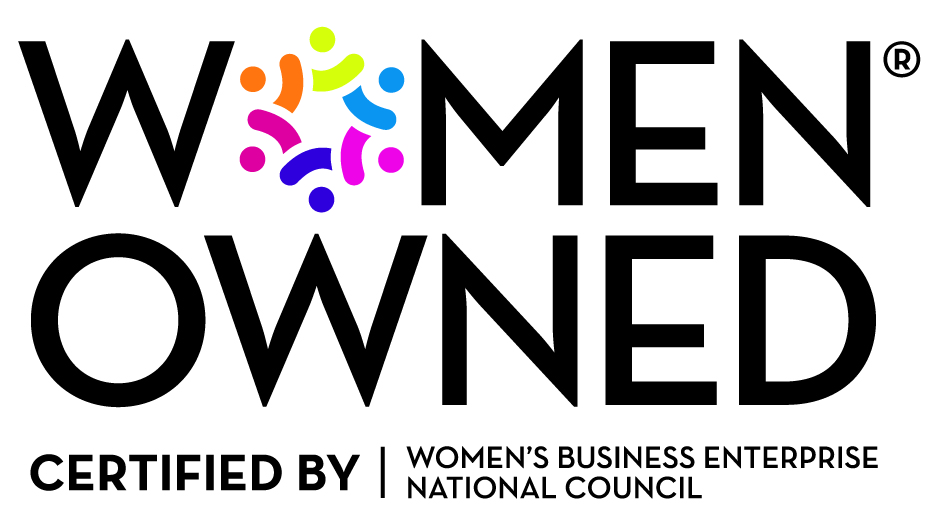Case Studies
Selected Case Study
Private Equity Interim CIO
Consumer products company catering to custom, private label product design, manufacturing and delivery experiencing exponential growth and was challenged to keep pace with demands on internal staff. Given the focus on raising new capital and the capacity and capability of its current resource base, the executive team and Board decided to source a senior, proven resource on an interim, contract basis.


Selected Case Study
Private Equity Permanent CIO
Omniflight Helicopters, based in Addison, Texas, had a fleet of about 100 helicopters and fixed-wing aircraft with operations in 18 states with 75 base operations and 2000 personnel. Owned by Wind Point Partners, the organization lacked technology leadership required to deliver compliant, integrated systems.
Selected Case Study
Private Equity Permanent CIO
Omniflight Helicopters, based in Addison, Texas, had a fleet of about 100 helicopters and fixed-wing aircraft with operations in 18 states with 75 base operations and 2000 personnel. Owned by Wind Point Partners, the organization lacked technology leadership required to deliver compliant, integrated systems.

Private Equity – Permanent CIO
Air Medical Transportation
Private Equity Owned
Situation
Omniflight Helicopters, based in Addison, Texas, had a fleet of about 100 helicopters and fixed-wing aircraft with operations in 18 states with 75 base operations and 2000 personnel. Owned by Wind Point Partners, the organization lacked technology leadership required to deliver compliant, integrated systems.
Objectives
The top three objectives were to update the financial system (Great Plains) to the current version, implement a new dispatch/charting/billing system and deliver a business intelligence system for robust reporting.
-
The Financial system was three releases behind and would be unsupported in 90 days. We were able to migrate to the current version in 6 months – going through each version release, focusing on data integrity with each release. Once data was migrated to the current version and the chart of accounts was in place, all reports were defined and delivered.
-
ERP for Air Medical encompasses dispatch, patient charting and patient billing. Integration between these three critical business functions is paramount. To minimize capital expenditure was a key tenant so the ultimate solution was Golden Hour software.
-
Business Intelligence became the most powerful tool to support the management team on making informed business decisions, but also to quickly respond to information requests from prospective buyers.
Success
These priorities were critical to prepare the company for change of control. All three objectives were accomplished on time, on budget and exceeded the expectations of the business stakeholders. The Business Intelligence tool was so coveted by the acquiring company, they retained our services an additional 6 months due to my extensive business understanding and insights.
Private Equity – Interim CIO
Consumer Products Retail
Private Equity Owned
Situation
Consumer products company catering to custom, private label product design, manufacturing and delivery experiencing exponential growth and was challenged to keep pace with demands on internal staff. Given the focus on raising new capital and the capacity and capability of its current resource base, the executive team and Board decided to source a senior, proven resource on an interim, contract basis.
Objectives
As Interim CIO, MTG was responsible for all day-to-day operations of IT to include maintenance and support of current applications, infrastructure and help desk.
The company identified five critical initiatives to prepare for capital infusion and a change of control.
Five business imperatives
-
- Ability to accurately report gross margin, projected margin on backlog and forecast by specific business attributes
- Define and implement an inventory management solution
- Identify solution for capturing and storing item attribute information
- Improve accuracy and consistency of sales forecasting
- Provide a standard mechanism for project requests and prioritization of project work load versus speculative margin through a workflow solution implementation
Success
Each business imperative was delivered and provided the foundation for a successful change of control.
The acquiring company retained MTG to assist with the merger and to lead the migration of data from legacy Sage to Oracle EBS.
Cloud ERP Delivery
Environmental Construction Services
Publicly Traded (TSX)
Situation
The largest environmental services company in North America, specializing in soil excavation of non-destructive excavation services, concluded their existing legacy platform (sales, field ticketing, fleet management, procurement, finance & accounting, HR) – which would also require enhanced technology investment – was unable to support future growth plans.
A new common business platform was needed to address current pain points as well as provide scalability for their growth strategy. Additionally, the new technology investment had to support an optimized operations model – standardized and integrated platforms across its North American Operations – as well as enable its’ workforce to collaborate and make decisions based on current and actionable intelligence.
Objectives
Oracle Cloud Fusion Suite (FIN, SCM, HCM, OFSC/Oracle Field Service Cloud, CRM, HSE, Taleo, OICS/Oracle Integration Cloud Services) was selected as the common business platform (CBP) through a laser-focused system selection process.
Solution blueprinting workshops transformed business processes / requirements into functional and system design specifications, and laid the groundwork for the solution architecture and an implementation plan with the appropriate sequencing / timing considerations. Opportunities for process optimization and automation were incorporated where appropriate.
The CBP required a disciplined implementation approach to ensure the technology and business aspects of the solution were delivered successfully …..
-
Integrations – focused on putting in place the automated connections to external systems and across the Oracle application suites.
-
Data Conversion – focused on the approach of cleansing and migrating data from legacy systems into CBP, whether using automated or manual procedures.
-
Testing – focused on the SIT end-to-end approach as well as multiple functional scenarios to test all aspects of the CBP with traceability to business requirements. UAT contained over 1100 test cases that were completed – including defect management – in a four week timeframe.
-
Instance Management – focused on the optimal approach to managing the many Oracle instances that were used throughout the project (Development, Testing, Training and Production).
Given project complexities (multiple internal/external teams, key activities occurring in parallel such as testing and training, mandatory Oracle quarterly patch updates, date fluctuations, etc.) both Agile and Microsoft Project were used co-jointly to manage project progress.
As the CBP impacted 2,000+ employees, Change Management was a critical program component. A layered training approach was used that combined instructor led on-site/off-site training, ‘at will’ hands-on online training and coaching/mentoring as needed. Training documentation was created in three different formats: 40+ Training Manuals (click by click, screen shots and process), 20+ Quick Reference Cards (major steps of a process including some screen shots), and 10+ Webinars.
Success
The CBP was implemented over an 18 month timeframe and went live in two phases across North America (phase 1 – HCM, Taleo, OICS, phase 2 – FIN, SCM, OFSC, CRM, HSE). The implementation was considered a resounding success by the Board and the company. The Oracle Cloud Fusion Suite provided a range of benefits, encompassing those that were tangible (revenue increase and cost reduction) as well as some that were intangible (employee satisfaction, customer goodwill).
Strategic Program – ERP Migration
Commercial Real Estate
Publicly Traded (NYSE)
Situation
The largest commercial real estate services company in the world, serving more than 90 of the top 100 companies on the Fortune 100, had undertaken a significant digital transformation initiative to realize substantial savings; however, it required a concerted migration strategy of moving from legacy to target platforms.
As a result the decision was made to decommission a legacy platform consisting of six critical systems that served 18 global client companies and replace it with a target state platform that encompassed three systems (financial software/JDE, facility management software/ServiceInsight, and analytics/EDP).
All existing systems had to be decommissioned and new ones implemented within an 18 month timeline to avoid significant financial penalties. And given the company’s recent focus on Agile methodology, it needed to be done using both Agile and Waterfall methodologies. Lastly, the sheer number of users – over 80,000 – in this complex program gave it high visibility across both internal and external executive levels
Objectives
Strategic planning and communications were foundational to the program. The roadmap was linked not only to the 34 sprints that were managed in Jira but was integrated with the weekly program status that provided the global management and client teams with a real-time view of progress and issues. The significant sifting of client accounts across quarters and start times, and the unanticipated impact from other outside systems, were critical factors in managing the team size and accounting for the constriction / addition of team members at critical program points.
Adaptable program management was necessary in the merging of agile and waterfall technologies. The program helped prove out that Agile (Sprint Planning, Daily Scrums, Retrospectives, Jira boards) could be used in the traditionally sequential and segmented deployment of applications on accounts and Kanban for hypercare. By adapting to meet program needs and adjusting / regulating tasks within sprints and across accounts, the 18 individual system migrations were implemented within an 18 month timeline.
The last solution component dealt with the variations in each client account implementation which required adaptability in approach. These variations ranged from unexpected target platform changes in interface systems and the solution system itself, to global regional dynamics in Europe / Asia regarding systems, development and schedule impacts. Constant validation against client timelines and priorities that did not match those of the program were critical in keeping the program on track.
Success
The success of this program contributed to ~$4.5M in OPEX savings which represented ~$60M in new revenue. Not only were the time and budget challenges met, but a number of secondary results were achieved that benefited existing and future clients (i.e., Positive Pay integration for JDE, Mass PO Upload Utility, Application Quality in testing, SSO and new languages).
Selected Case Study
Cloud ERP Business Transformation
The largest environmental services company in North America, specializing in soil excavation of non-destructive excavation services, concluded their existing legacy platform (sales, field ticketing, fleet management, procurement, finance & accounting, HR) – which would also require enhanced technology investment – was unable to support future growth plans.

Selected Case Study
Cloud ERP Business Transformation
The largest environmental services company in North America, specializing in soil excavation of non-destructive excavation services, concluded their existing legacy platform (sales, field ticketing, fleet management, procurement, finance & accounting, HR) – which would also require enhanced technology investment – was unable to support future growth plans.


Selected Case Study
ERP Migration Business Transformation
The largest commercial real estate services company in the world, serving more than 90 of the top 100 companies on the Fortune 100, had undertaken a significant digital transformation initiative to realize substantial savings; however, it required a concerted migration strategy of moving from legacy to target platforms.
Selected Case Study
ERP Migration Business Transformation
The largest commercial real estate services company in the world, serving more than 90 of the top 100 companies on the Fortune 100, had undertaken a significant digital transformation initiative to realize substantial savings; however, it required a concerted migration strategy of moving from legacy to target platforms.


